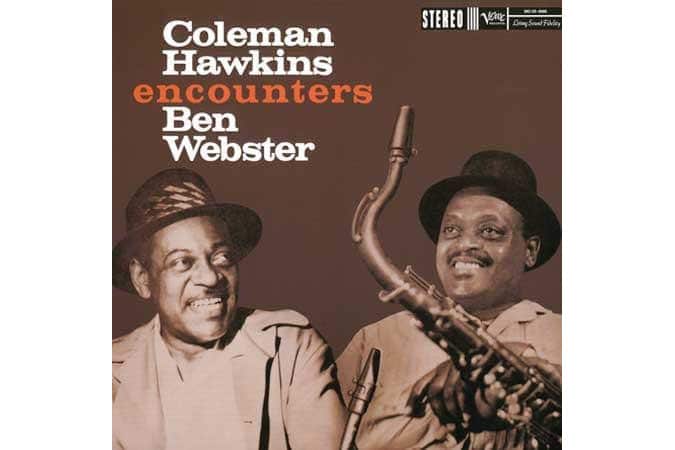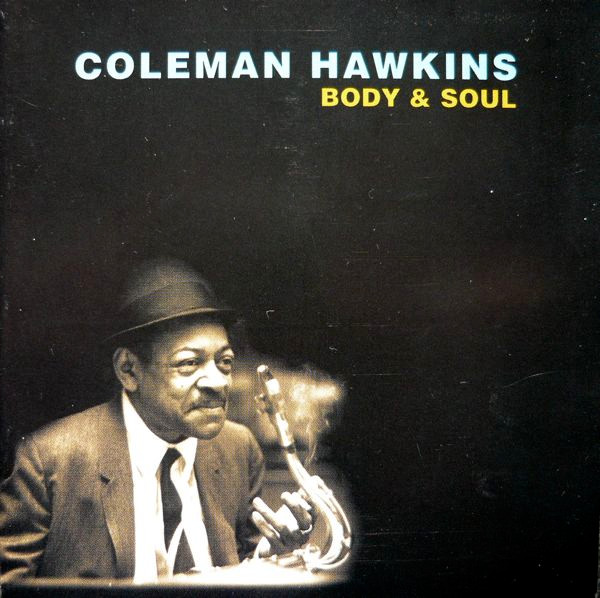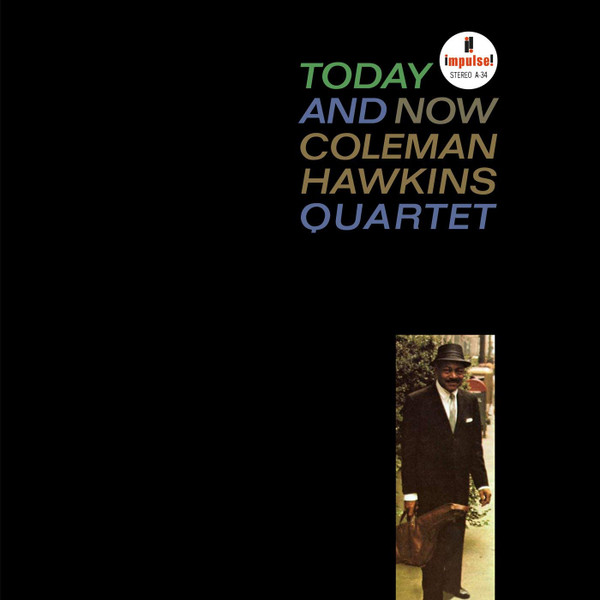Top 3 Coleman Hawkins Albums
Coleman Hawkins, known as "Hawk" or "Bean," was a pioneering American jazz tenor saxophonist whose influence resonated across generations. His virtuosic and emotive style left an indelible mark on the jazz landscape. In this article, we'll delve into Hawkins' discography and explore three standout albums that showcase his brilliance.

- Coleman Hawkins Encounters Ben Webster

The collaboration between Coleman Hawkins and Ben Webster is a meeting of titans, a union that captures the essence of tenor saxophone mastery. Released in 1957, "Coleman Hawkins Encounters Ben Webster" is a testament to the rich, expressive capabilities of these two legends. The album brings together their distinctive styles, creating a musical dialogue that is both dynamic and harmonious.
The interplay between Hawkins and Webster is a highlight, as they engage in musical conversations that reflect their deep understanding of the jazz idiom. Tracks like "It Never Entered My Mind" and "La Rosita" showcase the seamless blending of their tones, each saxophonist bringing his unique voice to the forefront while complementing the other.
What makes this album exceptional is the palpable camaraderie between Hawkins and Webster. Their mutual respect is evident, and it elevates the entire listening experience. "Coleman Hawkins Encounters Ben Webster" stands as a testament to the collaborative spirit of jazz and the enduring brilliance of these tenor saxophone giants.
If you are interested in learning music check out our Music Lessons in Tempe.
- Body And Soul

"Body And Soul" is a landmark recording that solidifies Coleman Hawkins' status as a trailblazer in the evolution of jazz. Recorded in 1939, this album includes a groundbreaking rendition of the standard "Body and Soul." Hawkins' interpretation of the tune is revolutionary, marked by arpeggiated improvisation and a departure from the conventional melodic themes.
The title track, a two-chorus performance of "Body and Soul," is a masterpiece that signaled the early tremors of bebop. Hawkins' daring departure from the melody and innovative use of chord intervals showcased his willingness to push the boundaries of jazz. The recording remains a crucial moment in the transition from swing to the more adventurous realms of bebop.
"Body And Soul" captures Hawkins at the forefront of musical innovation, laying the groundwork for future generations of tenor saxophonists. The album serves as a historical artifact, preserving the transformative moment when jazz was on the cusp of a stylistic shift.
- Today and Now

"Today and Now," released in 1962, reflects Coleman Hawkins' ability to adapt and remain relevant in the evolving jazz landscape. In this album, Hawkins embraces more modern jazz styles, collaborating with a stellar ensemble that includes pianist Tommy Flanagan, guitarist Barry Galbraith, bassist Major Holley, and drummer Eddie Locke.
The tracks on "Today and Now" showcase a mature and reflective Hawkins, exploring various moods and textures. The ballad "Love Song from "Apache"" highlights Hawkins' lyrical prowess, while the up-tempo "Put On Your Old Grey Bonnet" displays his versatility. The album is a testament to Hawkins' continued artistic growth and his openness to embracing contemporary jazz elements.
In "Today and Now," listeners witness Hawkins navigating the complexities of post-bop jazz with finesse. His ability to stay true to his signature sound while embracing new musical expressions underscores his lasting impact on the genre.
Coleman Hawkins' contributions to jazz extend beyond the albums discussed here, but these three stand out as exemplars of his artistry. "Coleman Hawkins Encounters Ben Webster," "Body And Soul," and "Today and Now" collectively paint a portrait of a musical pioneer who shaped the trajectory of tenor saxophone playing.
As we explore these albums, we gain insight into Hawkins' evolution as an artist—from his collaborative ventures with other jazz giants to his pivotal role in the bebop movement and his adaptability to modern jazz. The legacy of Coleman Hawkins lives on through these timeless recordings, reminding us of the enduring power and innovation within the world of jazz.
Coleman Hawkins' legacy extends far beyond his discography. His influence on fellow musicians and the jazz genre as a whole is immeasurable. Notably, his impact on the tenor saxophone left an indelible mark, inspiring generations of players to explore the instrument's expressive possibilities.
One of Hawkins' contemporaries, Lester Young, famously acknowledged him as the "President of the Tenor Saxophone." Young's acknowledgment speaks to Hawkins' unparalleled prowess and leadership in shaping the role of the tenor saxophone in jazz. Miles Davis, a trumpet virtuoso, attested to Hawkins' transformative effect on his musical journey, stating that hearing Hawkins made him "learn to play ballads."
Hawkins' influence is evident in the playing styles of numerous acclaimed saxophonists. Chu Berry, Ben Webster, and Vido Musso, among others, all trace their inspiration back to the pioneering techniques and emotional depth Hawkins brought to the instrument. The list of musicians who found inspiration in Hawkins includes names like Arnett Cobb, Illinois Jacquet, and Paul Gonsalves, showcasing the vast reach of his impact.
Beyond his role in swing music during the big band era, Hawkins played a pivotal role in the development of bebop in the 1940s. His ability to adapt and innovate, as showcased in albums like "Body And Soul," contributed significantly to the evolution of jazz as an art form.
In the 1960s, Hawkins continued to break new ground, collaborating with Duke Ellington and engaging with contemporary jazz styles in "Today and Now." His commitment to pushing musical boundaries remained unwavering, leaving a lasting imprint on the changing landscape of jazz.
As we reflect on Coleman Hawkins' unparalleled contributions, we recognize not only the brilliance of his individual albums but also the enduring impact of his artistry on the broader jazz community. Hawkins' journey through swing, bebop, and beyond serves as an inspiration for musicians exploring the limitless possibilities within the world of jazz. In celebrating his legacy, we honor not just the albums but the transformative spirit of a musical trailblazer.
If you like this check out our article: Top 3 Billie Holiday Albums
